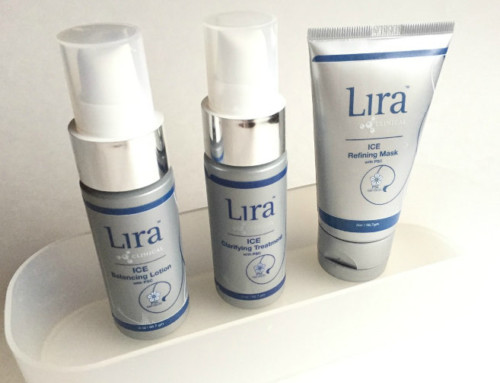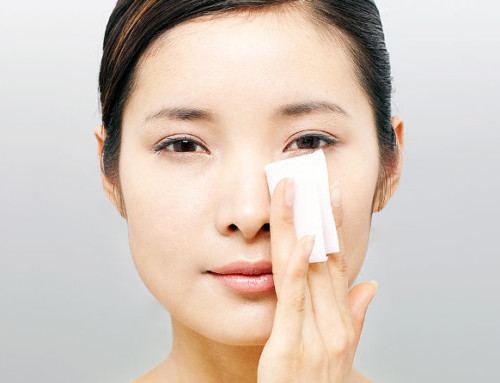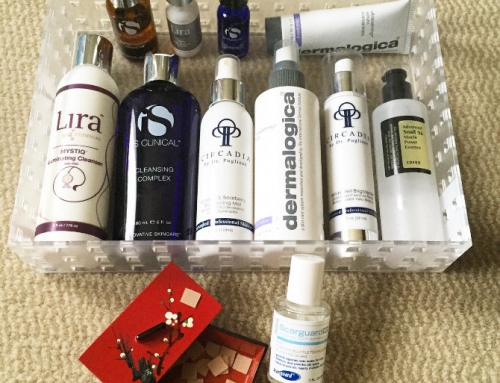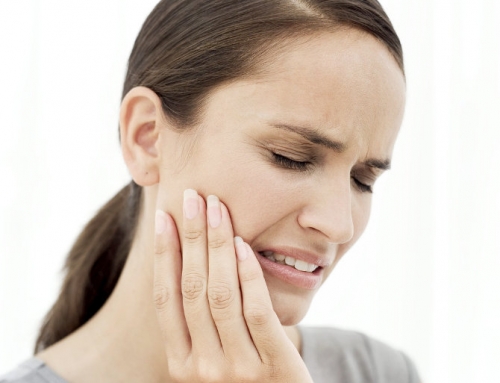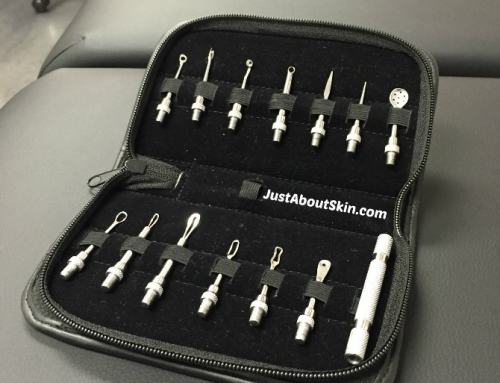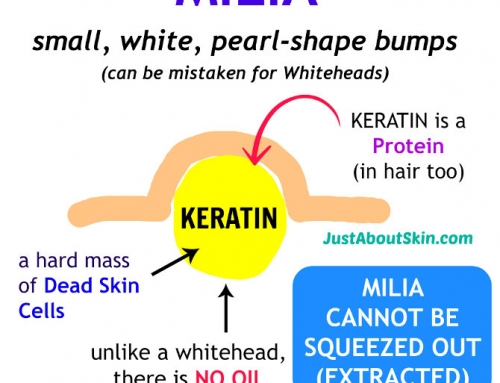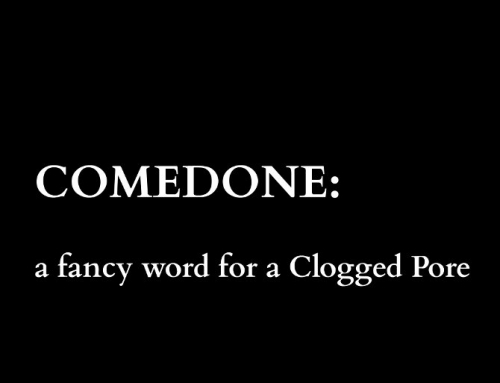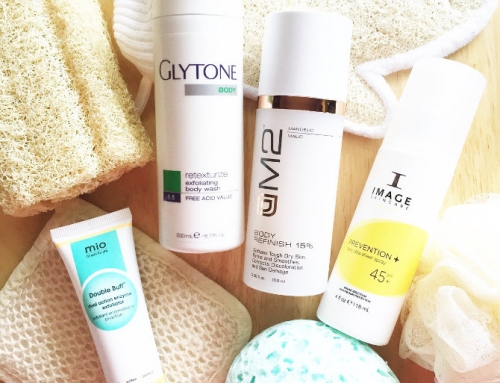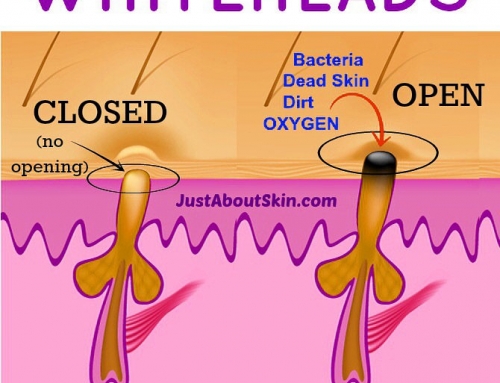Today’s topic is how to treat acne using topical ingredients. There are multiple ways to do this because there are different factors that lead to a ‘plug’ forming in a pore (I mean follicle but use the term pore).
So the key to successfully treating acne is to address these different factors. The challenge is not knowing which ones apply to you. This is why treating acne is such a frustrating trial and error process, and why one acne product doesn’t work for everyone.
Today, I’ll go over how each factor can be treated by specific ingredients. (My last post explained how these factors lead to a breakout.)
- Excess Sebum
- Excess Skin Cells
- Bacteria
- Inflammation
- Hormones
- Irritation
A. EXCESS SEBUM
Excess sebum is caused by over-active sebaceous glands. This may be due to a genetic disorder of the sebaceous glands or hormonal changes that stimulate sebum production.
Excess sebum can be treated in 2 ways:
- Absorb the excess sebum that’s already in the pores
- Regulate sebum production so that less sebum is produced
Oil Absorbers
These ingredients absorb excess sebum. They are typically found in products for oily skin They are only appropriate for oily skin, as they are too drying for normal to dry skin.
Clay is a common way to absorb oil. You can find clay in cleansers and masks. A clay mask applied a couple times a week is a relaxing way to absorb oil.
- Clay (examples: Kaolin, Bentonite)
- Zinc Oxide
- Cornstarch
- Oil-absorbent polymers (example: Nylon-12)
- Microsponges
Sebum Regulators & Inhibitors
These ingredients regulate your oil levels or reduce sebum production.
- Sulfur
- Salicylic Acid
- Benzoyl Peroxide
- Zinc Gluconate
- Farnesol, Farnesyl Acetate (found naturally in hops, lily of the valley, roses, mushrooms)
- Niacinamide
- Horse chestnut
- Caffeine
- Yeast
- Surfactants used in cleansers
- Prescription acne products (Retin-A, Accutane)
B. EXCESS SKIN CELLS
When you have an excess of dead skin cells clogging up your pores, you need to do 2 things:
- Remove the cell build-up
- Increase cell turnover to increase shedding
Both of these can be accomplished by exfoliation.
Exfoliating helps unblock clogged pores and increases the shedding of cells. Once a pore is unblocked, sebum can flow freely out of pore and onto skin. This is important as you don’t want excess sebum stuck inside the pores. That will only produce conditions for a clogged pore.
The best way to remove excess dead skin cells is by chemical exfoliation. This is achieved by ingredients such as alpha hydroxy acids (AHA’s), beta hydroxy acids (BHA’s), enzymes, and retinol.
Physical exfoliation (such as a facial or body scrub, loofah, pumice stone, oscillating cleansing brush) is not as effective because it only removes the outermost layer of dead skin. In contrast, chemical exfoliants, which dissolve the bonds holding skin cells together, can penetrate to the granular layer of the epidermis.
Physical exfoliants can also be too abrasive and irritating, especially on sensitive and acneic skin. If you have many acne lesions, avoid mechanically disturbing your skin, such as rubbing and scrubbing motions. This will only further irritate skin that is already irritated.
If you have acne or a bad case of clogged pores, daily use of an exfoliating cleanser, toner, serum, or gel moisturizer will help keep the pore canals clear of solidified sebum and bacteria.
Salicylic Acid is the most common exfoliating ingredient in acne products. It works by sweeping inside the follicle, sloughing off the cells lining the pore wall, and softening the impactions. It is anti-inflammatory and has a natural anti-bacterial effect. Salicylic Acid is typically found in concentrations of 0.25-2% in OTC products.
Azelaic Acid has antibacterial and lightening properties and is a nice complement to Salicylic Acid for reducing breakouts and lightening acne scars due to post-inflammatory hyperpigmentation.
Mandelic Acid is a gentle AHA that is naturally anti-bacterial too. It is an excellent choice for treating and preventing blackheads, and keeping breakouts under control.
Tretinoin (by Rx) and Retinol are also helpful for adult acne because they increase cell turnover.
Alpha Hydroxy Acids, Fruit, & Plant Acids
Alpha Hydroxy Acids (AHA’s) are derived from plant ingredients (but most are synthetically produced due to high demand). They are water-soluble. You can use find them in cleansers, serums, moisturizers, spot treatment products, and exfoliants.
- Glycolic acid (from sugar cane)
- Lactic acid (from milk)
- Mandelic acid (from almonds)
- Malic acid (from apples)
- Tartaric acid (from grapes)
- Citrus acid (from citrus fruits)
- Azelaic acid (from wheat & rye)
- Kojic acid (from soy & rice)
Beta Hydroxy Acids
Beta Hydroxy Acids are similar to Alpha Hydroxy Acids, except they are oil-soluble. This is what makes Salicylic Acid such a good ingredient for treating acne and blackheads. It can dissolve the sebum and loosen up the plug inside a pore. You can find Salicylic Acid in cleansers, serums, moisturizers, spot treatment products, and exfoliants.
- Salicylic acid
- Willowherb (natural alternative)
- Sweet birch (natural alternative)
- Wintergreen (natural alternative)
Enzymes
Enzymes are a gentle way to chemically exfoliate. Unlike AHAs, their effectiveness does not depend on the pH. These are the most common ones:
- Papain (from papaya)
- Bromelain (from pineapple)
Vitamin A – Prescription Retinoids & Retinol
Vitamin A in the form of prescription retinoids such as Tretinoin or non-prescription Retinol encourages cell turnover, which helps flush out clogged follicles.
- Retinol
- Retin-A (tretinoin – synthetically engineered retinoic acid)
- Tazorac (tazoratene – synthetically engineered retinoic acid)
- Differin (adapalene – synthetically engineered retinoic acid)
- Epiduo (adapalene with benzoyl peroxide)
C. BACTERIA
Not all bacteria is bad. But on skin prone to acne or blackheads, you need to control the growth of the bacteria responsible for acne, called p. acnes bacteria. This bacteria loves to eat sebum, and after it’s done eating, it excretes waste that causes irritation and inflammation inside the pores.
You can kill or suppress this bacteria in a few different ways. The most common ingredient is Benzoyl Peroxide, which works by starving the bacteria. Specifically, it suffuses the pores with oxygen, which kills bacteria since it cannot live in the presence of oxygen. Benzoyl Peroxide is typically found in concentrations of 2-10%, but should not be used in concentration above 5%. It can irritate skin and cause an allergic contact dermatitis in some people.
Benzoyl Peroxide also has the added benefit of being a comedolytic. It is able to remove the blockage inside a clogged pore.
Anti-Bacterial Ingredients
These ingredients kill bacteria or suppress their growth.
- Benzoyl Peroxide
- Sulfur
- Salicylic Acid
- Willowbark extract
- Azelaic acid
- Tea tree oil (be careful – a known cause of allergic contact dermatitis in some people)
- Rx antiobiotics
- Rx acne products (e.g. Retin-A, Epiduo)
- Coneflower (echinacea)
- Lavendar
- Thyme
- Sage
- Meadowsweet (Spirarea ulmaria)
- Triclosan
- Zinc Sulfate
- Some alcohols (examples: SD alcohol, isopropyl alcohol, ethanol)
For severe cases of inflammatory acne, a physician can prescribe a topical or oral antibiotic.
D. INFLAMMATION
Controlling inflammation is absolutely essential for controlling acne. Inflammation starts the moment a microcomedone is formed. The sooner you address the inflammation, the faster you stop a comedone from turning into a papule, which can then turn into a pustule and cyst.
Anti-Inflammatory Ingredients
- Licorice (dipotassium glycyrrhizinate, licochalcone)
- Green tea, white tea, rooibos tea
- Coneflower (echinacea)
- Allantoin
- Aloe
- Witch hazel
- Oat, oatmeal
- Sea whip
- Panthenol
- Hydrocortisone
A longer list of anti-inflammatory ingredients is here.
E. HORMONES
Testosterone turns on the glands that produce sebum. One way to control testosterone is to control the enzyme that stimulates its production. This enzyme is called 5 alpha-reductase, which converts testosterone into a more powerful form. By inhibiting this enzyme, you can reduce testosterone levels.
5-Alpha Reductase Inhibitors
- Licorice
- Zinc PCA
- Licorice
- Pumpkin
- Saw palmetto
- Avocado
For more severe cases of inflammatory acne in women who do not respond to acne treatments, a physician can prescribe an oral contraceptive (birth control pill) that is high in estrogen, which will help reduce oil production.
F. IRRITATION
Pores become irritated by waste products excreted by bacteria (when they feed on sebum). An enzyme called Lipase is responsible for digesting the sebum and producing this waste. Inhibiting this enzyme reduces irritation in the pores.
Licorice is an excellent, multi-tasking ingredient for acne. It is a lipase inhibitor. And it reduces 5-alpha reductase, the enzyme involved in testosterone production. It is also an excellent anti-inflammatory.
In fact, licorice is just a great ingredient to have in skin care products, since it minimizes chronic inflammation, the source of many skin issues and a cause of premature aging. Look for this.
Related Articles:



